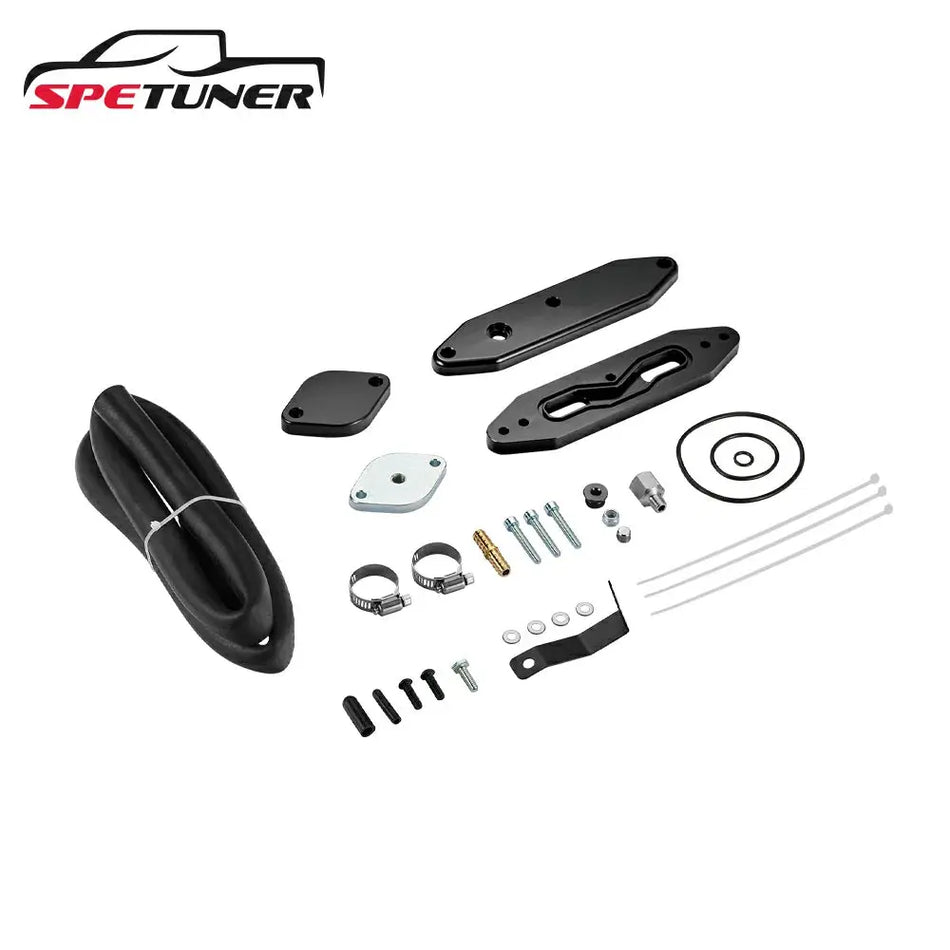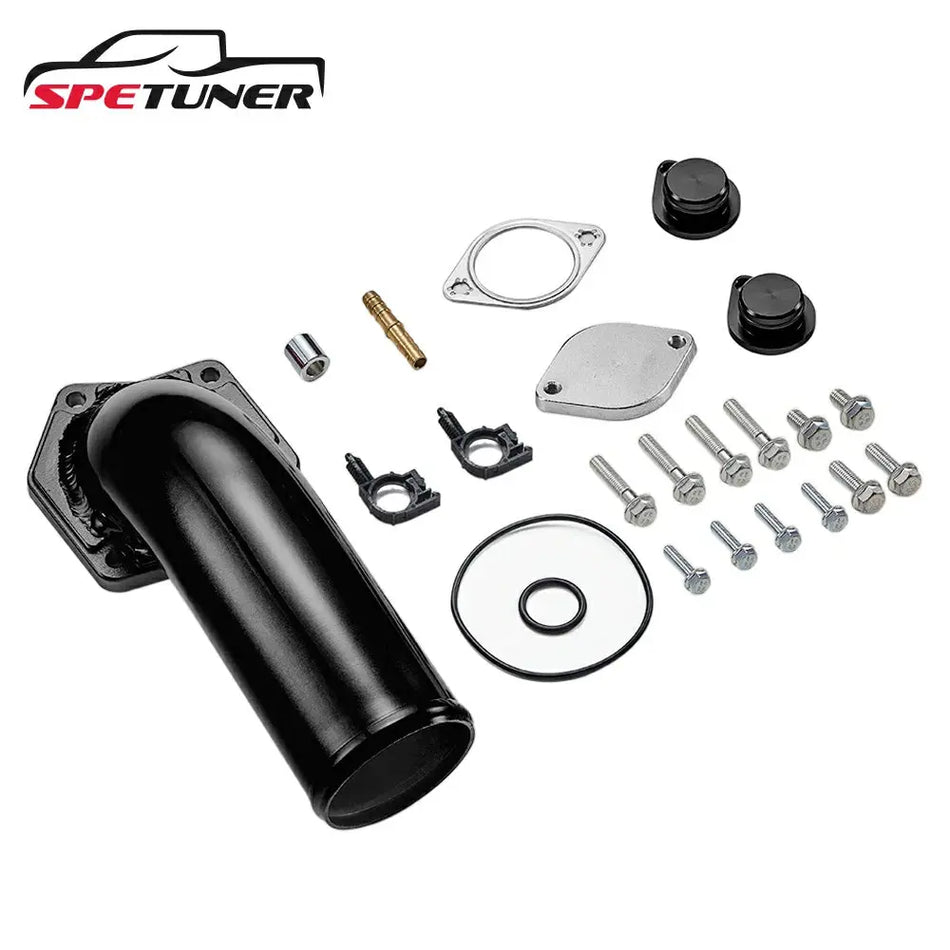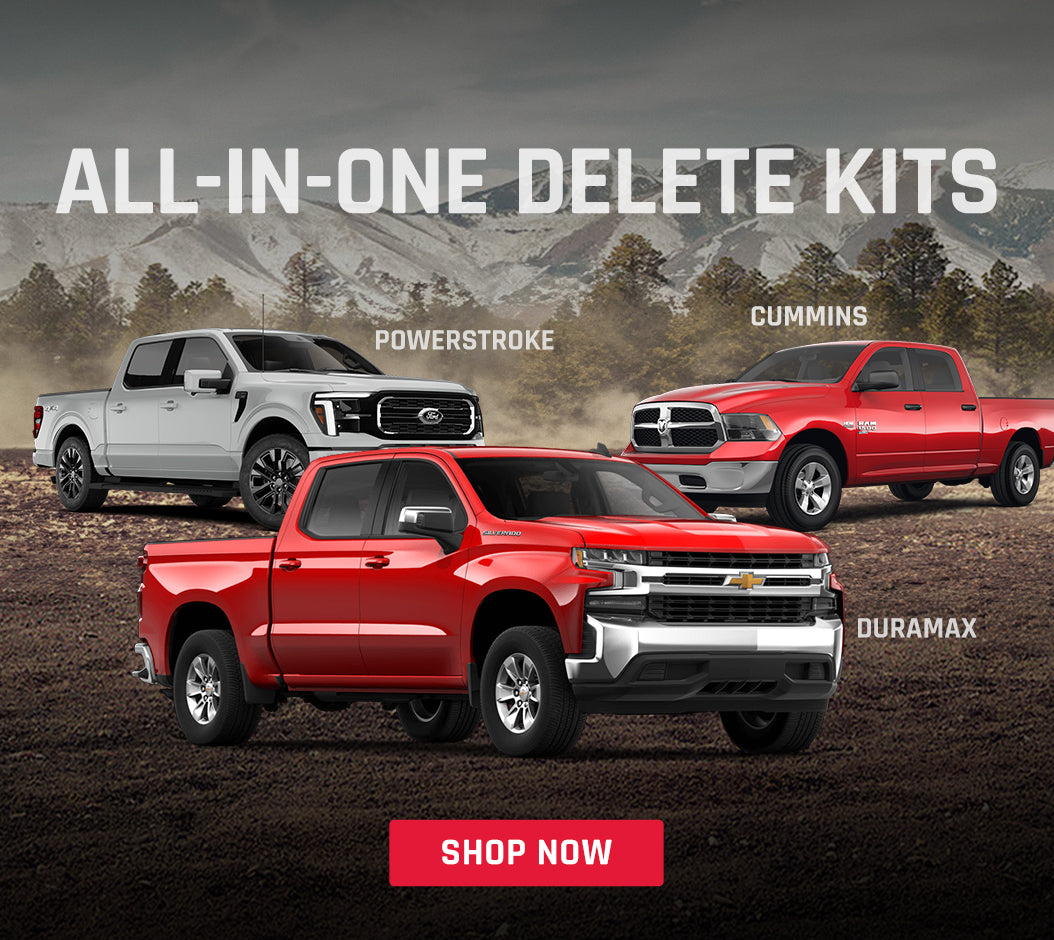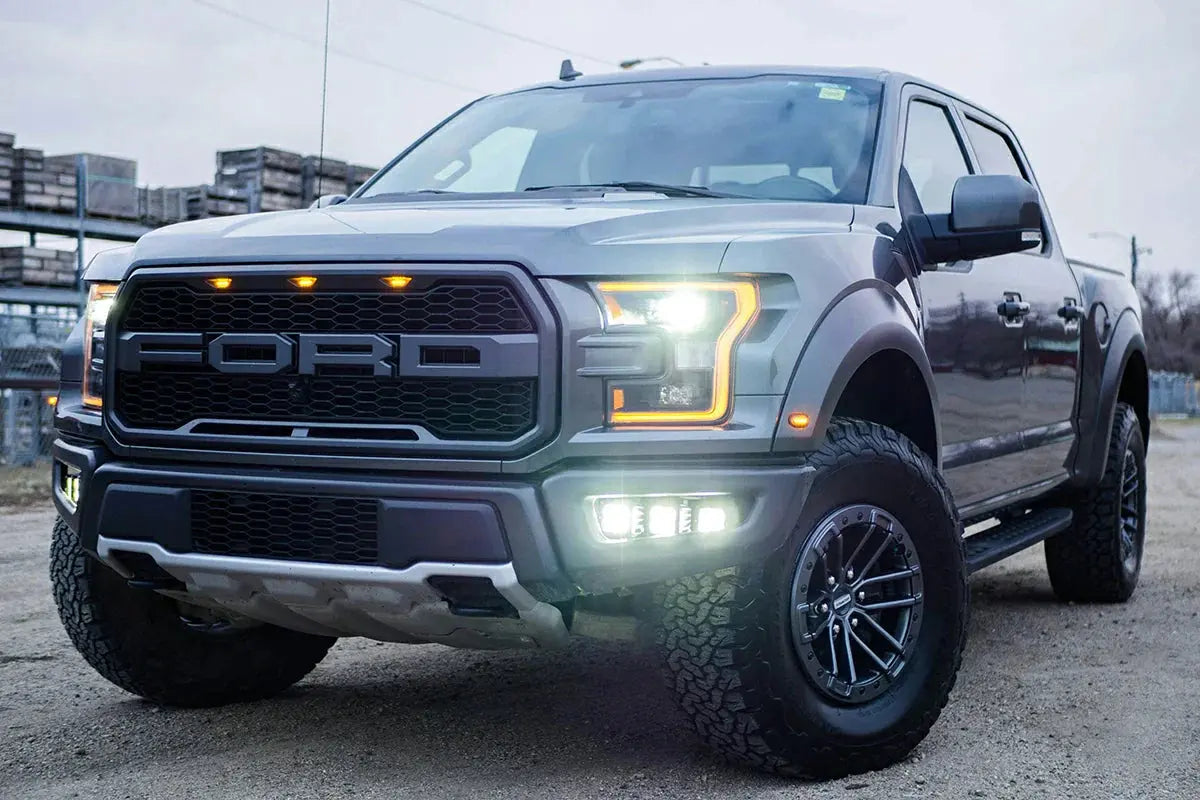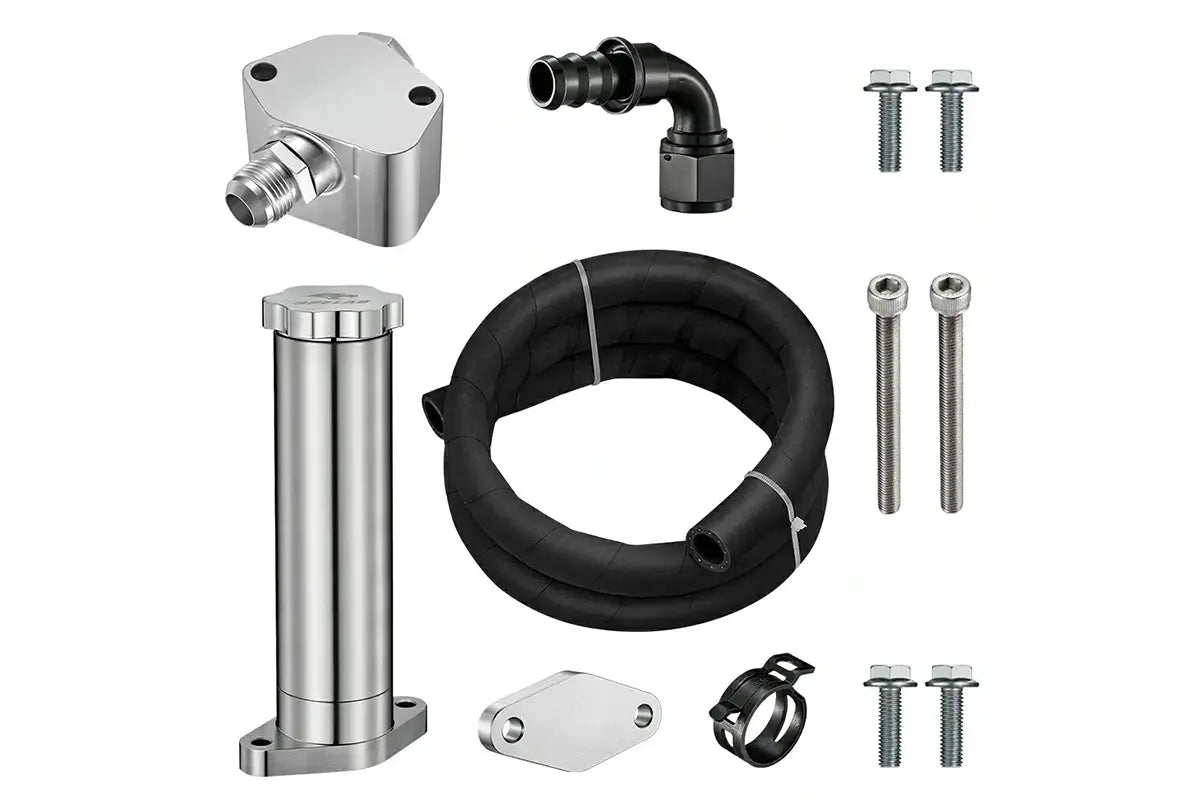1. Introduction: Why More Diesel Truck Owners Are Looking Into Downpipe Upgrades
If you drive a Ford Powerstroke or Duramax, you probably already know these engines are built for power. But with all the emissions equipment strapped on from the factory, there’s a lot of performance being held back.
One key part of that bottleneck? The downpipe.
In turbo-diesel platforms, the downpipe connects the turbocharger to the rest of the exhaust system. It handles hot exhaust gases under high pressure, and unfortunately, a restrictive stock downpipe means slower flow, higher backpressure, and less turbo efficiency.
That’s why diesel enthusiasts are turning to aftermarket downpipes. Whether you're after more power, better spool, or prepping for a full delete setup, this one mod can make a real difference.
But the big question is: how much horsepower does a downpipe actually add? And is it worth doing on a modern diesel truck?
We’re about to break that down, specifically for the platforms we know best at SPETUNER: Powerstroke and Duramax.
2. Real HP Gains: How Much Power Does a Downpipe Add on Diesel Trucks?
Let’s cut to the chase—a downpipe can add horsepower to your diesel truck. But the exact number depends on a few key factors: your engine platform, whether tuning is involved, and whether you’re using a catless or catted pipe.
Here’s what we’ve seen consistently from dyno-tested setups at SPETUNER:
- Ford Powerstroke 6.7L: Gains of 15–25 HP, especially when paired with tuning.
- GM Duramax 6.6L (LML/L5P): Adds 10–20 HP, depending on airflow restrictions and exhaust system upgrades.
Without tuning, the gain is usually on the lower end. But once you free up airflow and optimize the ECU, the downpipe lets the turbo breathe and spool faster—that’s where the real horsepower appears.
Keep in mind, these aren’t just numbers. That extra power translates to quicker throttle response, stronger pulling at low RPM, and more efficient towing performance.
Bottom line? A downpipe won’t turn your truck into a dragster—but it will wake up your engine and set the stage for bigger upgrades down the road.
3. Why a Downpipe Boosts Power: The Real Mechanics Behind It
So, why does a simple pipe make such a difference?
It comes down to exhaust flow and backpressure. Stock downpipes are narrow, restrictive, and packed with emissions hardware that creates turbulence and heat. That extra pressure slows down exhaust gases and forces your turbo to work harder.
An aftermarket downpipe—especially a larger-diameter, mandrel-bent one—reduces that restriction. It allows hot gases to exit faster, which in turn lowers exhaust gas temperatures (EGTs) and helps the turbo spool quicker.
Quicker spool = more boost, sooner. And that means more usable torque and horsepower across the powerband.
This is critical on diesel trucks. Turbo lag is the enemy of throttle response, especially when towing or hauling under load. A high-flow downpipe helps eliminate that delay and makes your truck feel more responsive, even before tuning.
In short, the downpipe is the first domino in your performance chain. Let it breathe, and your engine will respond.
4. Catless vs Catted Downpipes: Which Is Right for Your Diesel Truck?
This is a common question we get from customers: Should I go catless or stick with a high-flow catted downpipe?
Let’s break it down:
Catless Downpipe
Offers maximum flow and the biggest horsepower gains.
Ideal for off-road or competition use.
Must be paired with a tune that disables DPF/DEF systems.
Without tuning, it will trigger a check engine light (CEL) and will not pass emissions testing in most states/provinces.
Catted (High-Flow) Downpipe
Still reduces restrictions significantly compared to OEM.
Legal in more areas, depending on your location.
Great for daily drivers who want a performance bump without fully deleting emissions.
Often easier to pass inspections (but always check local laws).
For most SPETUNER customers, it comes down to how they use the truck. If it's a dedicated tow rig or weekend warrior that rarely sees public roads, catless makes sense.
If you're driving it daily and want to stay under the radar? A high-flow catted downpipe is a smarter long-term choice.
We carry both Powerstroke and Duramax options, and we’ll help you choose the right one for your setup and goals.
5. Downpipe vs. Straight Pipe: Which Upgrade Delivers More for Diesel Trucks?
Let’s clear this up—a downpipe and a straight pipe are not the same thing, and they serve different purposes in your exhaust system.
Downpipe
Connects directly from the turbo to the exhaust.
Its job is to reduce backpressure and improve turbo spool.
Comes in catted or catless versions, offering some flexibility for street use.
Often, the first step is a staged exhaust upgrade.
Straight Pipe
Usually refers to a full exhaust delete—no muffler, no resonator, no DPF, no DEF.
Provides maximum sound and airflow, but is strictly for off-road/race applications.
It can add more horsepower than just a downpipe, but it’s all or nothing and definitely illegal for street use in most regions.
So, which should you choose?
If you’re building a full performance setup and don’t mind the noise or the legal risks, a straight pipe will move more air. But for most diesel truck owners who want reliability, performance, and a bit more sanity in daily driving, a quality downpipe is the smarter first move.
Start with the downpipe, especially if you're not ready to delete your entire exhaust system. You’ll get a noticeable power bump and keep your options open.
6. Installation & Tuning: What to Expect with SPETUNER Downpipes
If you're upgrading to a SPETUNER downpipe, good news—installation is quick, clean, and fully tested for fitment. We’ve engineered each of our diesel downpipes to work seamlessly with your platform, without the guesswork.
✅ Duramax 6.6L Downpipe Options
For 2004.5+ LLY, LBZ, LMM Duramax: Our downpipes are precision-fit and designed to drop into the factory location.
For 2017+ L5P Duramax: Built to handle high heat and boost levels with a direct bolt-on installation.

✅ Powerstroke 6.7L Downpipe Options
For 2015–2019 Powerstroke F250/F350: These downpipes fit snugly around factory components and clear firewall and transmission brackets with zero cutting required.

Downpipe Exhaust For 2015-2019 Ford 6.7L Powerstroke F250 F350 F450 F550
downpipe pipe
$199.00
Buy Now
We’ve put every downpipe through real-world testing, both on and off-road. That means no weird fitment surprises, no excessive modification, and performance that’s proven on the dyno.
�� Tuning Considerations
Catless versions require tuning to prevent CELs and properly disable emissions systems.
Our downpipes are designed to pair with SPETUNER tuning packages, delivering reliable horsepower and torque gains without compromising drivability.
Whether you're towing heavy or just want better throttle response, this is the first upgrade we recommend.
7. More Than Horsepower: What Else You Gain From a Downpipe Upgrade
Horsepower gets all the attention, but a downpipe does more than add a few extra numbers on a dyno sheet. It unlocks real-world performance that diesel truck owners actually feel every day.
Here’s what else you can expect after upgrading:
⚡ Faster Throttle Response
Less restriction in the exhaust path means the turbo can spool quicker. That translates to more immediate power when you step on it, especially noticeable under load or when merging onto highways.
�� More Torque for Towing and Hauling
Downpipes help lower EGTs and reduce turbo lag. That makes a big difference when you’re pulling a trailer uphill or working under a heavy load. You’ll feel the power come on sooner and hold longer.
�� Improved Component Longevity
A high-flow downpipe reduces exhaust system strain. Lower temperatures mean less thermal stress on the turbo, DPF (if retained), and exhaust piping.
�� Better Upgrade Compatibility
Downpipes also set the stage for future performance mods—like cold air intakes, tuning, or full exhaust systems. It’s a foundational upgrade, not just a one-off bolt-on.
At SPETUNER, we don’t just sell downpipes—we help build upgrade paths. Our diesel customers use them as the first step toward full custom tuning and emission system optimization.
8. Emissions Compliance & Warranty: What Diesel Owners Need to Know
Let’s discuss the elephant in the garage—legal compliance and warranty coverage. These are real concerns, especially for street-driven diesel trucks in the U.S. and Canada.
⚖️ Emissions Compliance (U.S. & Canada)
SPETUNER downpipes are engineered for off-road and race use only unless explicitly stated otherwise.
That means:
Catless downpipes are not legal for highway use in most states or provinces.
High-flow catted downpipes may offer cleaner performance, but still might not meet CARB or provincial inspection standards.
We always recommend checking your local regulations. States like California, New York, and Colorado have strict emissions rules. In contrast, many other regions have more flexibility for off-road or non-inspected vehicles.
All our products are labeled clearly, so you know what you’re installing.
��️ Will It Void My Warranty?
Here’s what you need to know:
Under the Magnuson-Moss Warranty Act, a dealer can’t void your entire truck warranty just because you installed a downpipe.
However, if an issue is directly caused by the downpipe—for example, an exhaust leak damaging the turbo—the related portion of the warranty may not be honored.
We’ve seen thousands of diesel owners install downpipes with zero issues. Still, it’s smart to document your install and know your rights if warranty questions come up.
When in doubt, our team is here to help you choose the right product for your goals without risking your daily drivability or long-term reliability.
FAQ: Common Questions About Diesel Downpipes Answered
We get a lot of questions from truck owners who are ready to upgrade but want to be sure they’re making the right move. Here’s what you need to know before you hit “buy” on that downpipe.
❓ Will a downpipe void my warranty?
Not entirely. Thanks to the Magnuson-Moss Warranty Act, your full truck warranty can’t be voided just because you install a downpipe.
However, if a dealer can prove the downpipe caused a specific issue (like a turbo failure), they may deny coverage for that part only.
❓ Do I need to tune after installing a downpipe?
Yes, especially for catless setups. Without a proper tune, you'll get a check engine light, and your truck won’t take full advantage of the performance gains.
Tuning is strongly recommended even for high-flow catted options, as it improves fuel mapping, boost control, and overall drivability.
❓ Will it make my truck louder?
Yes, but not obnoxiously so. Removing restrictions in the downpipe allows for a deeper, more aggressive exhaust tone, especially under throttle.
If you’re also deleting the muffler or DPF, expect a noticeable increase in volume.
❓ Can I pass emissions with a downpipe installed?
If you're running a catless downpipe, the answer is almost always no—it’s intended for off-road use only.
A high-flow catted downpipe might pass in some states or provinces, but it depends on your local emissions standards. Always verify before upgrading.
❓ What’s the best downpipe for towing?
Look for a catted downpipe with optimized flow—something that improves spool without pushing EGTs too low or too loud.
At SPETUNER, our Powerstroke and Duramax downpipes are tuned for both performance and towing reliability.
Do you have more questions? Don’t hesitate to contact our tech team—they are standing by to help you pick the right setup for your truck.



